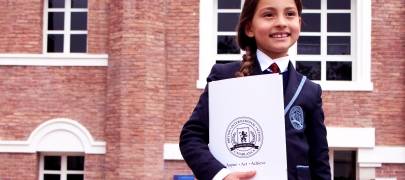Presentation Policy Primary School
Aims
Children will produce work of a high standard and all pupils should be encouraged to feel a sense of pride in their learning.
Audience
All academic staff, including teaching assistants, support departments and teachers.
Aims
To establish a consistent approach to the presentation of recorded learning vertically and horizontally across the whole school.
Equal Opportunities
All children will have the same level of high expectations, with support provided where necessary, for example, through the use of electronic devices.
EYFS
Children may record in books if appropriate but the nature of learning at this age should be play based and explorative. Any work done by children in books should be dated and titled by an adult. Some children may be able to write the short date and a short title by the end of Reception but this should not be a lengthy process that detracts from learning.
YEARS 1 to 6
Recording of Dates and Learning Outcomes
The process of recording dates and learning outcomes may be done independently by students, but only if this is appropriate for the child and does not take undue amounts of time that detracts from learning. Printed dates and learning outcomes may be appropriate.
Maths
In general, the child’s Maths book will be set out as follows:
- The short date should be written and underlined with a ruler.
- The learning outcome should be written as the title and also underlined with a missed line afterwards. In KS1 this could be pre-printed by an adult.
- (NB Staff may decide which side of the page the date and title should be written).
- Children should write on the line.
- 1 digit or fraction should be recorded in one square.
- Straight lines, graphs and tables should be drawn with a pencil and ruler.
- The children should use pencil at all times.
- When starting a new piece of work, the previous work should be ruled off as pages should not be wasted.
- Any sheets that are stuck in must be cut to the right size or folded neatly. In KS1 this could be done with adult support.
- Children should be encouraged to show working out which could take a variety of forms e.g. jottings, diagrams, pictures etc.
- Working out should be recorded in the book and the children should be encouraged to present it clearly.
- If a correction is required, it should be written clearly alongside the mistake made.
- Where appropriate, pages can be folded in half vertically as calculation pages.
English
In general the child’s English book will be set out as follows:
- The long date should be written and underlined with a ruler.
- The Learning Outcome should be written as the title and also underlined with a missed line afterwards. This could be pre-printed by an adult.
- (NB Staff may decide which side of the page the date and title should be written).
- Children should write on the line.
- The children should use pencil but may start to use a black or blue pen when appropriate.
- When starting a new piece of work, the previous work should be ruled off as pages should not be wasted.
- Final drafts of work may be published using a computer or on different coloured paper for display purposes.
- Pictures should be drawn in pencil and straight into the book then coloured with pencil crayons.
- Any sheets that are stuck in must be cut to the right size or folded neatly. In KS1 this could be done with adult support.
- If a correction is required, one neat pencil line should be drawn through the mistake and the correction written clearly alongside.
Global Perspectives and Science
In general the child’s Global Perspectives and Science work will be set out as follows:
- From Y1 to Y4, the children should write the short date and underline it. In Y5 and Y6, the long date should be written and underlined with a ruler.
- The learning outcome should be written as the title and also underlined with a missed line afterwards. This could be pre-printed by an adult.
- (NB Staff may decide which side of the page the date and title should be written).
- Children should write on the line.
- The children should use pencil but may start to use a black or blue pen when appropriate.
- When starting a new piece of work, the previous work should be ruled off as pages should not be wasted.
- Final drafts of work may be published using a computer or on different coloured paper for display purposes.
- Pictures, diagrams, tables and graphs should be drawn in pencil and straight into the book then coloured with pencil crayons.
- Any sheets that are stuck in must be cut to the right size or folded neatly. In KS1 this could be done with adult support.
- If a correction is required, one neat pencil line should be drawn through the mistake and the correction written clearly alongside.

Admissions
Admissions are now opened and we invite you to visit us, meet our Heads, Teachers, Admissions team to discover our pedagogy based on rigour, excellence, compassion and respect.
Enquiry now